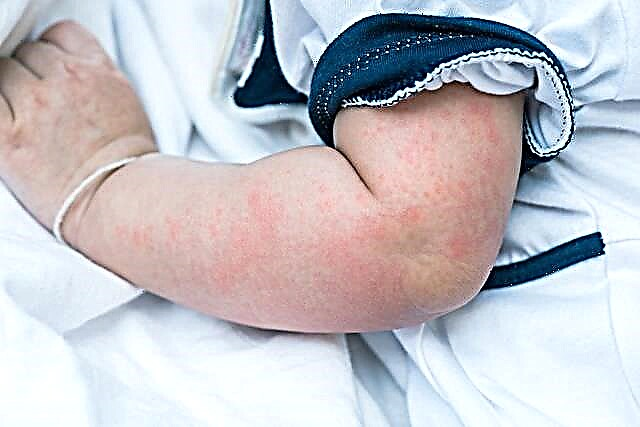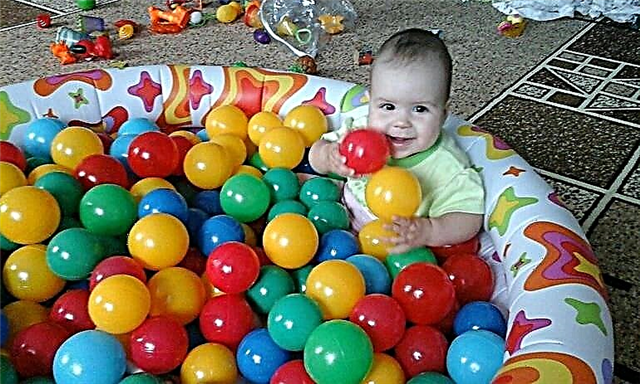
If a mother has doubts about the amount of milk that her baby sucks from her breast, one should not rush to buy formula milk. First you should try remedies that help increase the production of breast milk in the female body.
How to understand that you need more milk?
It is possible to determine that the baby is receiving an insufficient amount of milk from her mother's breast in the following ways:
- Counting the number of urinations of the baby per day. The diaper is removed for the baby and the number of diapers that the baby has wetted during the day is counted. If there are 10 or more of them, and the urine is light, then there is no problem with the amount of milk.
- Weighing the child. It is recommended to be carried out once a month, assessing the increase. A normal increase is considered from 500 grams. Weighing each day or before or immediately after feeding is not an objective indicator.

The main sign is the state of health of the baby. If the baby falls asleep at the breast and withstands at least 2-2.5 hours before the next feeding, he has enough milk.
In the mother's breast, milk is produced in the amount in which it is required by a particular baby exactly at the time when the mother is feeding the baby. The amount of milk cannot be judged by the volume of milk expressed from the breast, as the baby is able to suck much more milk than it does when expressing.
Production
Several reflexes based on the action of hormones such as oxytocin and prolactin are responsible for the production of milk, as well as the release of it from the female breast. The first link in such reflexes is the sucking of the breast by the baby. It acts on the nerve receptors in the breast, which send signals to the woman's brain and stimulate the production of hormones. The released hormones, on the one hand, contract muscle cells in the glandular tissue of the breast so that milk moves to the nipple (this is how oxytocin works), and on the other hand, they stimulate the production and accumulation of milk in the breast until the next feeding (this is how prolactin works). Read more about this in another article on how breast milk is formed and when it appears.
As the baby grows, the mother has periods when milk is produced less than the baby needs. Such periods are called lactation crises. Most often they are observed at 3-6 weeks after childbirth, in the third-fourth and in the seventh-eighth months of breastfeeding. They usually last three to four days and do not affect the health of the baby in any way. During these crises, the baby begins to suckle more often, which acts as an incentive to increase milk production in the breast. And literally after one or three days, the baby begins to receive milk in sufficient quantity for him.

Factors affecting the amount of milk
The true lack of milk production is found in only 5% of women and is often caused by their health condition. In other cases, a decrease in lactation is caused by the following reasons:
- Lack of a positive psychological attitude towards breastfeeding.
- Poor nutrition.
- Stress and unfavorable situations in the family.
- Rare feedings.
- Improper attachment.
- Feeding the baby on a schedule.
- Unjustified introduction of supplementary feeding with milk mixture.
- Feeding the newborn with water.
- Using a pacifier.
These factors can reduce lactation, but they are easy enough to correct, which will affect milk production and help avoid stopping breastfeeding.
You don't need to worry if:
- The child did not gain weight in a week. You should focus on an increase in a 2-week period.
- The breasts have become softer and smaller in volume. This is a sign that the mammary glands produce just as much "nutrition" as the baby needs. When the baby was born, the breast began to produce milk in excess, because she "did not know" how much food your little one needs.
- If the baby was born large. There is enough breast milk in mother's breast even for very large babies. In addition, breastfeeding helps prevent rickets and obesity in these babies.
- The baby asks for breasts very often. This happens if the baby sucks out only the milk that comes in first - the "front". It is thinner and richer in carbohydrates. If the toddler asks to feed him earlier than after 1.5 hours, we advise you to give him the same breast for a more complete emptying and for the baby to receive “hind” milk rich in fats.
- The expressed milk looks "lean". In fact, human milk looks very different from the usual white and thick cow's milk. But the wateriness and pallor of women's milk does not at all indicate its "poverty". It is impossible to judge its composition by the type of milk.

What if there is not enough breast milk?
The first action of the mother, who began to worry about the insufficient supply of breast milk to the baby, should be to check the correctness of the attachment, as well as the correctness of the feeding regime.
More frequent attachment of the baby
Between feedings there should be no more than two hours in the first months of a baby's life (more than three hours at night). Mom can apply a sleeping baby to the breast, especially at night, because it is night feedings that stimulate the production of hormones important for lactation.
In addition to frequent attachments, nursing mothers are advised:
- Feed your baby from each breast for a long time. So the baby will receive milk from the back of the gland, and due to complete emptying, more milk will arrive.
- Change the breast during feeding so that the baby does not fall asleep quickly. Also, occasionally let your baby burp air. This will keep your baby awake throughout the feed and will empty the breast completely. In addition, you can give the baby both breasts, then walk with the child for 10-15 minutes, not letting him fall asleep, and again give both breasts.
- Do not forget about body contact. Mom needs to strip to the waist and attach a naked baby to the breast. As a result, more hormones responsible for lactation will be released from tactile sensations and stimulation of skin receptors.
- Avoid bottle feeding and pacifiers. The baby sucks them differently and may "mix up the nipple." The result can be painful grasping of the mother's breast and ineffective sucking.

Nutrition
Mom's correct diet will support her body and become a good basis for long-term lactation. At the same time, you should not greatly increase the portion sizes. Nutrition quality and adequate nutrient intake are more important.
Read more about nutrition for a nursing mother to increase lactation in another article.
Drink
Sometimes a mom just needs to increase the amount of fluids she drinks during the day. You can drink plain water, tea with added milk, and various drinks that contain lactogonic components. On sale now you can find special teas for women who are breastfeeding, for example, instant drinks from Hipp.
It is noted that carrot drinks contribute to lactation. You can drink carrot juice by adding fruit and berry juices, honey, cream. You can also pour a glass of hot milk into a finely grated vegetable in the amount of 3-4 tablespoons and drink it immediately.

Massage
The breasts that were just given to the baby should be massaged under running water in a warm shower. The breast should be treated with water for 5-10 minutes, while the movements of the jet should be circular and directed from the nipple to the outer borders of the mammary glands.
You can also massage your breasts with castor oil. After lubricating your palms with oil, grab your chest and make circular rubbing movements. In this case, you do not need to press hard on the chest. You should also avoid getting oil on the areola area.

Baths
Before going to bed, a nursing mother can do a breast bath. Having poured hot water into a large container, you need to bend over to it as low as possible and lower your chest into the water. Keep the breast in hot water for 15 minutes, then wipe it off, put on underwear made from natural fabrics and immediately go to bed.
Honey. drugs, tablets
It is not recommended for nursing mothers to abuse synthetic drugs, but you can try the effectiveness of pills, herbs and other means.
Supplements and homeopathy
Dietary supplements that help increase the production of human milk include various complexes of vitamins and other useful substances that affect the level of lactation (various herbs, royal jelly, and others). For example, such agents are Lactogon and Apilactin.
Mleoin is considered one of the homeopathic remedies effective for enhancing lactation. It is a granular product that is taken before meals. A nursing mother can use it for the entire period of breastfeeding.
Vitamins
For women who are breastfeeding, the doctor who supervises them during pregnancy usually prescribes multivitamin complexes. The duration of these vitamin supplements will be determined by the duration of breastfeeding.

Herbs
The ability to improve lactation has been noted in fennel, caraway, nettle, anise, dill and some other herbs. Tea, broth or infusion is usually prepared from them. For example, 15 g of cumin seeds are poured with a liter of hot water, lemon is added (it needs to be peeled and cut) and sugar (100 g). After boiling the liquid for 5-10 minutes, filter it and drink it chilled throughout the day. For the infusion of anise or dill seeds, the raw material is poured with boiling water and left for an hour. A filtered drink is consumed in 2 tablespoons.
It is noted that every woman is helped by her “own” herb. The effect of herbal remedies can be noted after half a day. If the remedy does not work, you can try to brew another herb.



